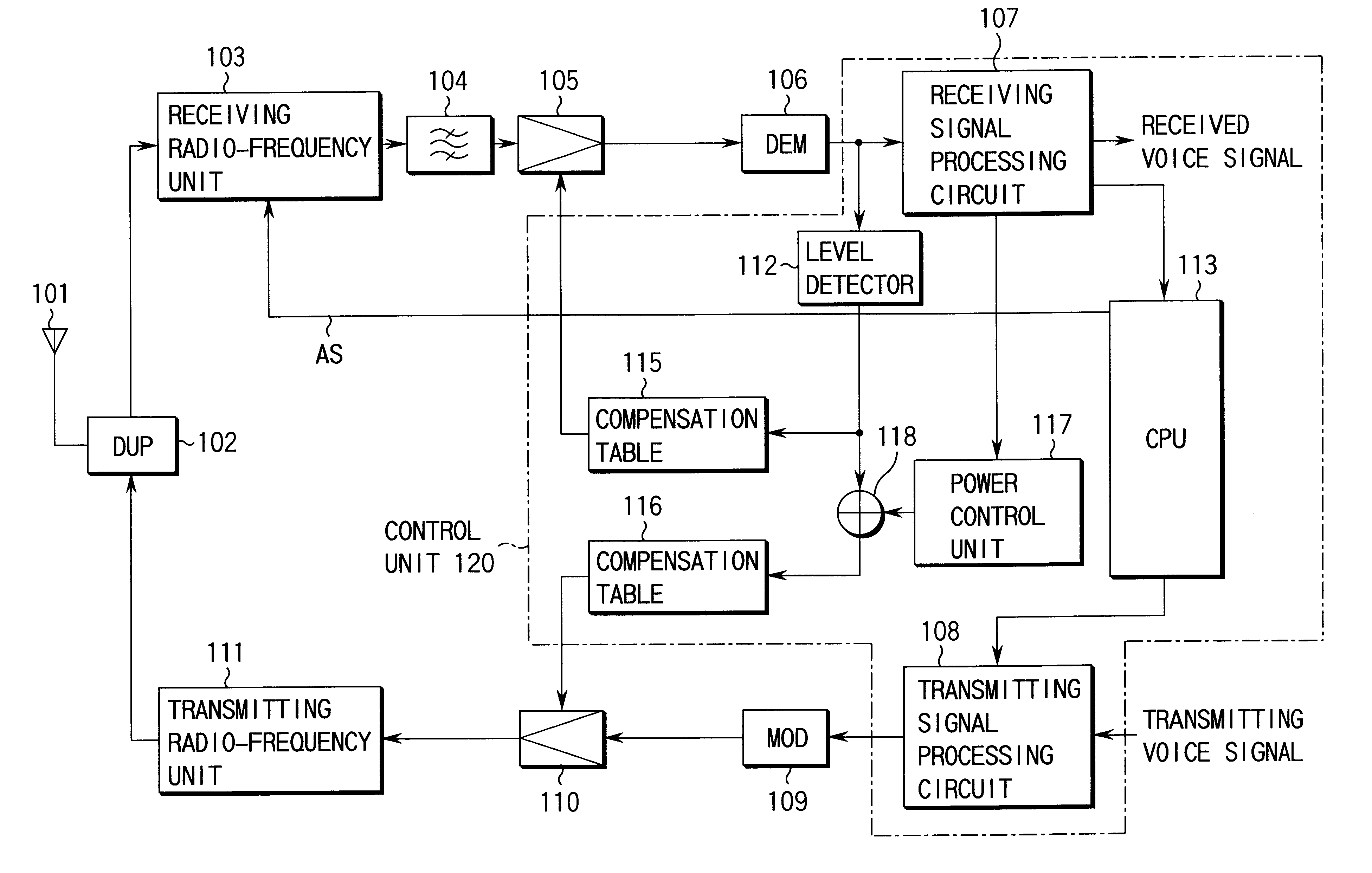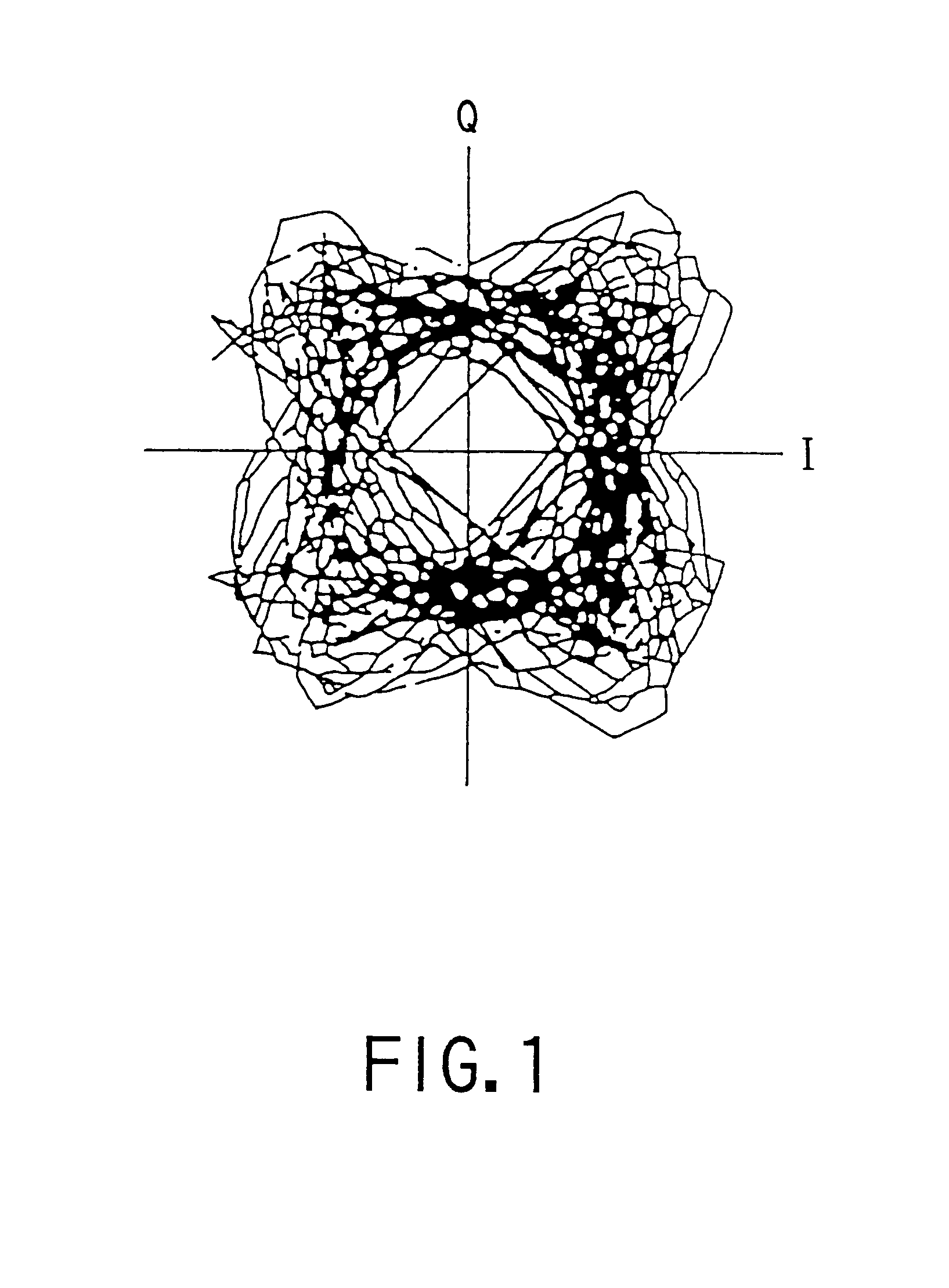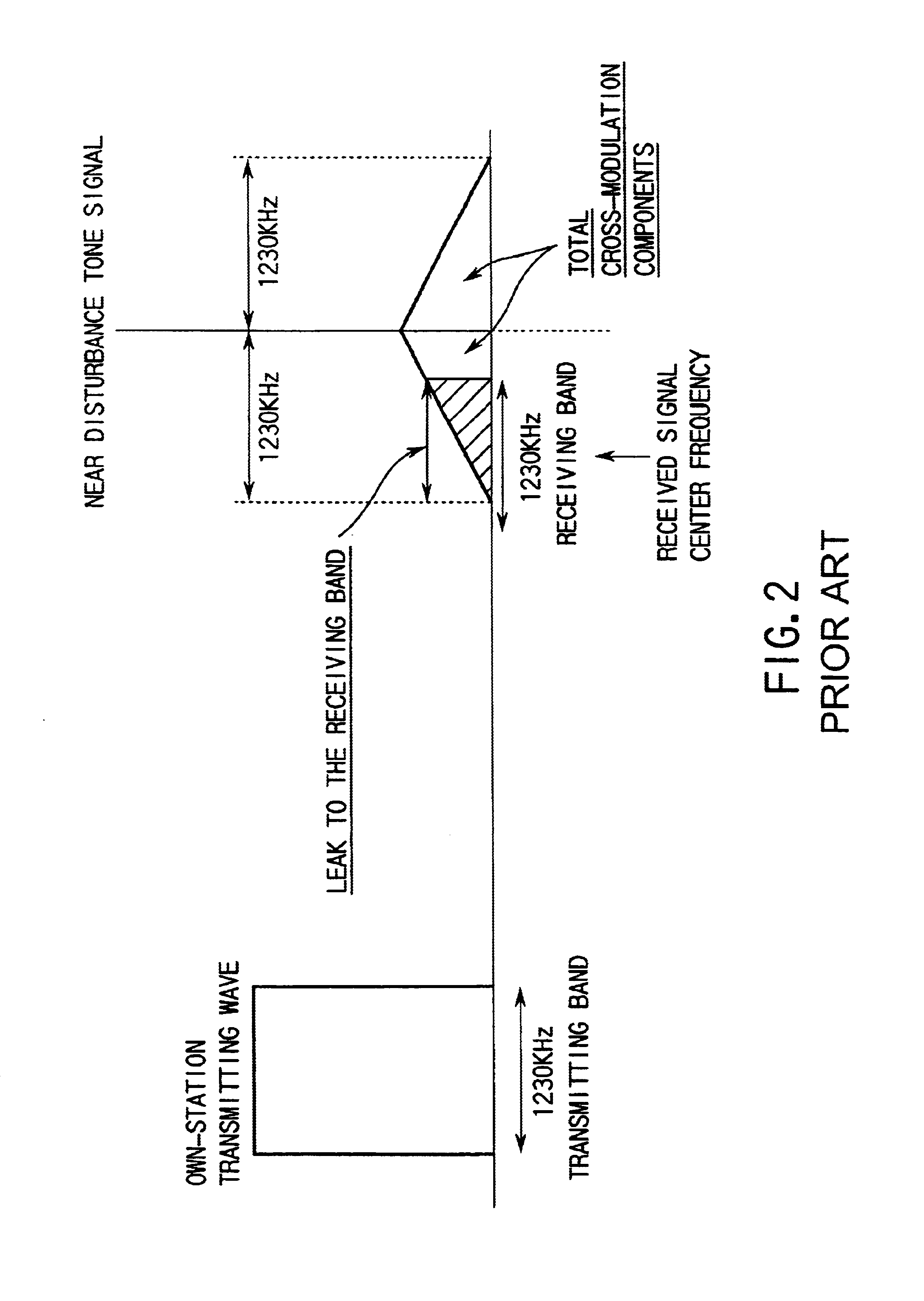Radio transmitter-receiver, high-frequency radio receiver, and control unit
a transmitter receiver and radio receiver technology, applied in power management, wireless communication, high-level techniques, etc., can solve the problems of accelerating the deterioration of the receiving characteristics, affecting the operation of the cdma mobile terminal apparatus, and reducing the unnecessary current consumption of the transmitting radio-frequency circuit, so as to prevent the variation of the frequency characteristics of the front-stage circuit and reduce the effect of unnecessary current consumption
- Summary
- Abstract
- Description
- Claims
- Application Information
AI Technical Summary
Benefits of technology
Problems solved by technology
Method used
Image
Examples
first embodiment
(First Embodiment)
FIG. 3 is a block diagram showing a CDMA radio transmitter-receiver for a mobile terminal apparatus, according to a first embodiment of the present invention.
In the figure, a radio frequency signal transmitted from a base station (not shown) is received by an antenna 101, and input to a receiving radio-frequency unit 103 serving as a receiving front end stage via a antenna duplexer (DUP) 102. In the receiving radio-frequency unit 103, the received radio frequency signal is subjected to the low noise amplification, removal of received unnecessary waves outside the receiving band, and frequency conversion into the receiving intermediate frequency. Unnecessary waves near desired signals are removed from the receiving intermediate frequency signal by an intermediate frequency filter 104. Further, the receiving intermediate frequency signal is adjusted to be a signal level suitable for the demodulating process of a latter stage by a receiving variable-gain amplifier 105...
second embodiment
(Second Embodiment)
According to a second embodiment of the present invention, when the apparatus has a transmitting mode for intermittently burst-transmitting a transmitting radio wave in accordance with the transmission bit rate, switching between the low distortion LNA and the low current consumption LNA in the receiving radio-frequency unit is executed by using a transmission timing control signal which is output to the transmitting radio-frequency circuit by the control unit, for the intermittent transmission control.
FIG. 5 is a block diagram showing a configuration of a radio transmitter-receiver according to a second embodiment. In this figure, the same portions as those of FIG. 3 are denoted by the same reference numerals, and their explanation is omitted.
Generally, a CDMA radio transmitter-receiver provides the variable rate coding for varying the encoding rate in accordance with the state of a speaker's voice, for example, whether a speaker speaks fast or slowly, whether du...
third embodiment
(Third Embodiment)
A third embodiment of the present invention is an improvement of the above-described second embodiment. The receiving level of the downstream radio signal transmitted from the base station is determined by using the gain control signal for the open-loop transmission power control. The low distortion LNA is selected during the upstream radio signal burst-transmitting period and in a case where the receiving level of the downstream radio signal is lower than a threshold value. On the other hand, even in the upstream radio signal burst-transmitting period, when the receiving level of the downstream radio signal is equal to or higher than a threshold value, the receiving radio-frequency unit is switched so as to select the low current consumption LNA.
FIG. 6 is a block diagram showing a radio transmitter-receiver according to the third embodiment. In this figure, the same portions as those shown in FIG. 5 are denoted by the same reference numerals and their detailed exp...
PUM
 Login to View More
Login to View More Abstract
Description
Claims
Application Information
 Login to View More
Login to View More - R&D
- Intellectual Property
- Life Sciences
- Materials
- Tech Scout
- Unparalleled Data Quality
- Higher Quality Content
- 60% Fewer Hallucinations
Browse by: Latest US Patents, China's latest patents, Technical Efficacy Thesaurus, Application Domain, Technology Topic, Popular Technical Reports.
© 2025 PatSnap. All rights reserved.Legal|Privacy policy|Modern Slavery Act Transparency Statement|Sitemap|About US| Contact US: help@patsnap.com



